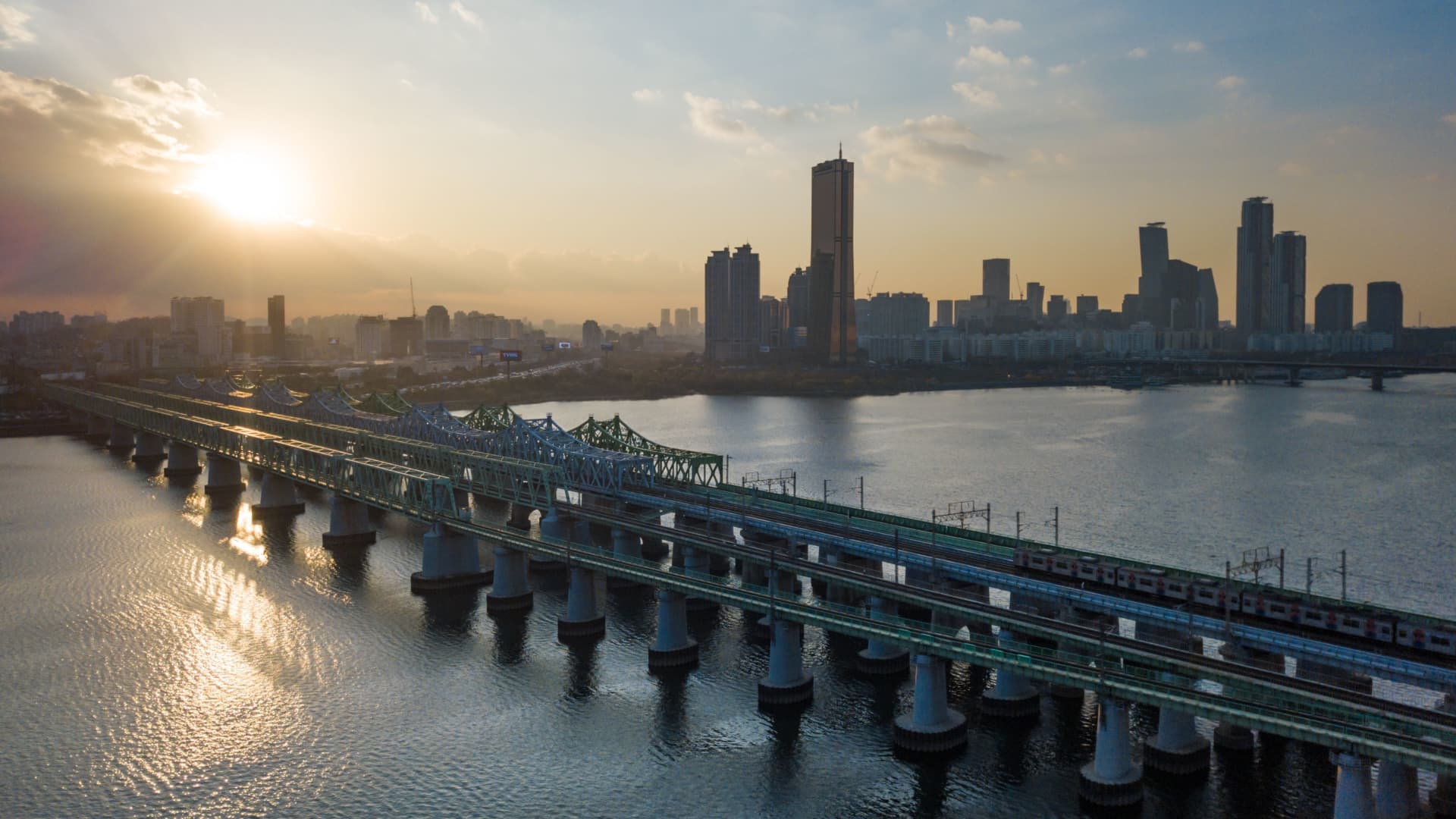In a photo taken on November 4, 2019 a subway train crosses a rail bridge over the Han river, before the skyline of the Yeouido business district of Seoul.
Ed Jones | Afp | Getty Images
Japan’s Nikkei 225 extended its six-day losing streak to plunge 3%, leading losses among Asian indexes as the region saw a broad sell-off after Wall Street tumbled overnight.
Nikkei heavyweight SoftBank Group nosedived 7%, while Renesas Electronics led losses in the index, down more than 14%. The broader Topix fell 2.24%.
The yen also marked a fourth-straight day of strengthening against the U.S. dollar, hitting an 11-week low of 152.28 against the greenback.
Reuters reported that the Bank of Japan is expected to discuss a rate hike at its monetary policy meeting next week on July 30 and 31, as well as detailing a plan to halve its bond buying.
Separately, a Japanese government panel agreed to increase the average minimum hourly wage in the country to 1,054 yen ($6.90), or 5%, NHK reported.
Higher wages offer the Bank of Japan more room to consider a rate increase, as it banks on a “virtuous cycle” of rising prices and wages.
Investors also assessed South Korea’s advance second-quarter GDP numbers, which came in slightly below expectations.
South Korea’s GDP grew 2.3% year on year, lower than the 2.5% expected by economists polled by Reuters. On a quarter on quarter basis, the country’s economy shrank 0.2%, compared to a 0.1% rise expected in the Reuters poll and a reversal from the 1.3% growth seen in the first quarter.
South Korea’s Kospi lost 1.8%, while the Kosdaq was down 2.32%. The index was dragged by heavyweight SK Hynix, which also fell 6%.
This comes as the company reported an all-time high quarterly revenue of 16.42 trillion won ($11.85 billion) for its second quarter, marking a gain of 125% from a year ago.
Operating profit came in at 5.47 trillion won, its highest in six years. Net profit stood at 4.12 billion won. Both metrics reversed from loss positions in the same period last year.
Hong Kong Hang Seng index slipped 1.65%, while the mainland Chinese CSI 300 was down 0.98%.
China’s central bank cut the medium term facility lending rate to 2.3% from 2.5%, its latest move to stimulate the economy after lowering its loan prime rates on Monday.
Australia’s S&P/ASX 200 was 0.94% lower.
Taiwan’s market will be closed for a second day, as the island braces for Typhoon Gaemi.
Over in the U.S., the S&P 500 and Nasdaq Composite saw their worst days since 2022.
The broad market index lost 2.31%, closing at 5,427.13, while the tech-heavy Nasdaq slid 3.64% to end at 17,342.41. The Dow Jones Industrial Average shed 504.22 points, or 1.25%, closing at 39,853.87.
Tech names sold off, including Nvidia and Meta Platforms, which lost 6.8% and 5.6% respectively. Shares of Alphabet — Google’s parent company — fell 5% for their biggest one-day drop since Jan. 31.
Meanwhile, Tesla shares declined 12.3% — their worst day since 2020 — on weaker-than-expected results and a 7% year-over-year drop in auto revenue.
—CNBC’s Lisa Kailai Han and Hakyung Kim contributed to this report.




















Discussion about this post